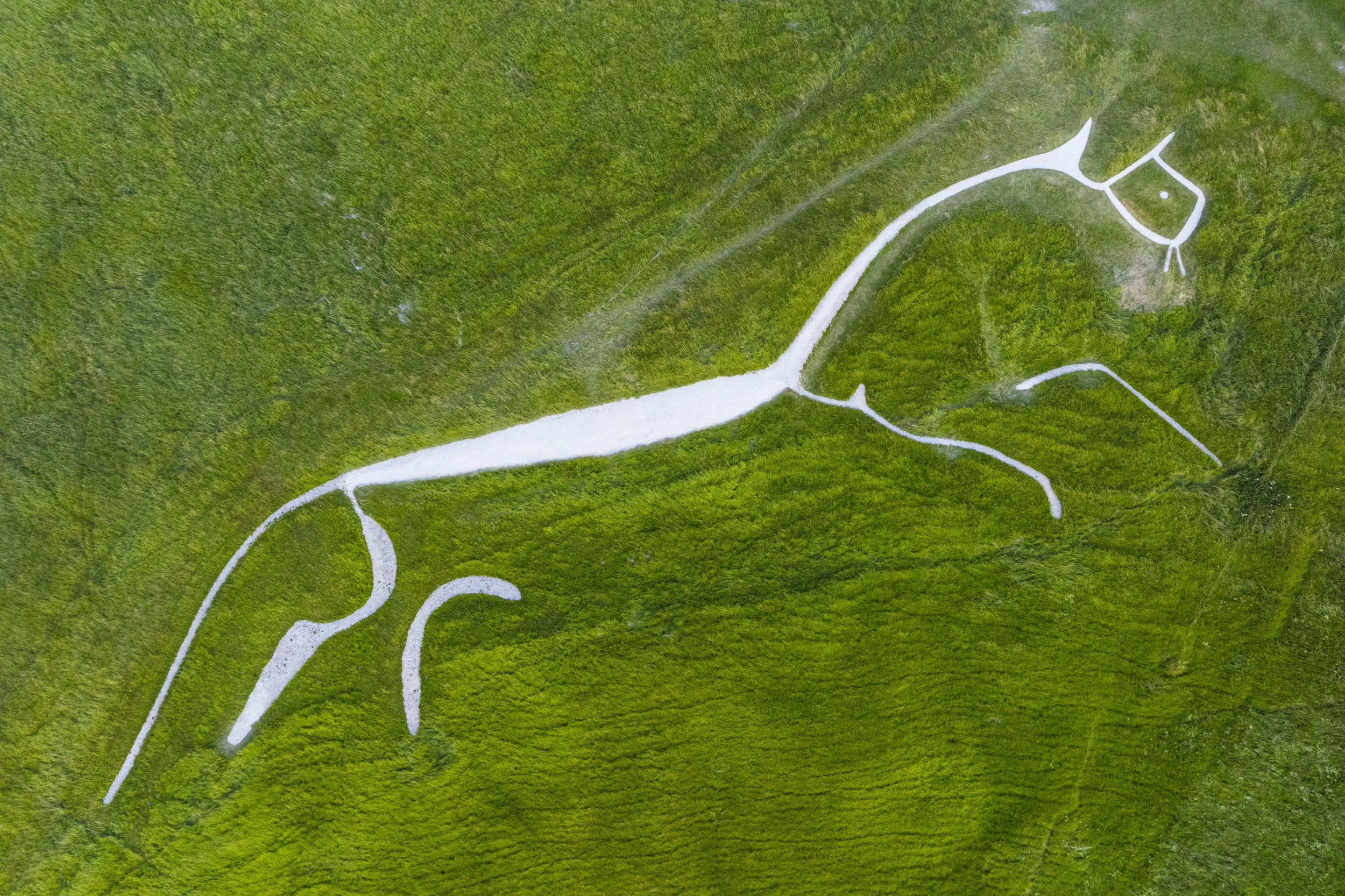A “unique” prehistoric artwork depicting a horse has been restored to its “former glory.”
The Uffington White Horse was carved into a chalk hill around 3,000 years ago in what is now Oxfordshire, a county in South East England. The much-loved Bronze Age figure, which measures more than 360 feet in length, is the oldest scientifically dated chalk figure in Britain.
But despite having survived millennia—with the help of the local communities—research conducted last year revealed that parts of the Uffington White Horse had shrunk over time, prompting the latest restoration works.
These works were carried out by specialists with independent heritage practice Oxford Archaeology in partnership with the National Trust, a United Kingdom-based charity that manages the site on behalf of English Heritage.
Simon Palmer and David Miles, experts who recently retired from Oxford Archaeology but have been supporting the latest work, told Newsweek that the restoration of the horse was a “relief.” The pair led excavations at the site in the 1990s.
National Trust
“The Horse has survived for nearly 3,000 years due to the commitment of the local community regardless of who ruled the land, what language was spoken or what religion they followed,” Palmer and Miles told Newsweek. “We would have failed past and future generations if we had let this iconic monument deteriorate. It certainly has been a privilege to have worked on this monument.”
The narrowing of parts of the figure can be explained by the gradual encroachment of grass on the outlines of the horse and the slippage of the topsoil, according to the National Trust. This was most apparent in the head and neck area, which had narrowed to less than half its typical width.
To restore the horse to its typical profile, archaeologists carefully cut the encroaching turf back to the estimated original edge and redistributed some of the top layer of chalk on the figure.
“The restoration of the work was greatly aided by modern technologies—the use of drones and photogrammetry has allowed us to map the Horse precisely and compare it to previous historic surveys,” Palmer and Miles said.
“We are now able to provide a template for the future management—the Horse is a living monument in that it requires constant attention to keep it in existence. While we do not wish to fossilize its shape, it is important that this landmark is kept within its more traditional form.”
During the restoration work, researchers collected soil samples from the lowest layers of the figure in the hope that they could more accurately determine its date of creation. Similar samples taken in the 1990s revealed the horse to be Britain’s oldest chalk figure, but dating techniques have improved since then. Results of these tests are expected later this year.
“Having the opportunity to work on such an iconic landmark and contribute to this exciting project is a huge privilege for us and we’re delighted to be part of it. Now the hard work is done, and we can see elements of the monument restored to its former glory, we will be eagerly awaiting the results of research to see what new information this will bring to light,” Oxford Archaeology project manager Mark Dodd said in a press release.
Determining a more accurate date could help researchers understand the true significance of the Horse to its creators.
“We should not separate the significance of the Horse from its immediate landscape, which has been used for burial for many millennia and still inspires many to have their ashes spread across the site,” Palmer and Miles told Newsweek.
National Trust archaeologist Adrian Cox called the Horse a “hugely important” chalk figure—not least because it is the oldest scientifically dated example in Britain.
“It is also an intriguing figure as we don’t know for certain its original purpose,” Cox said in the release. “It could have been a way of marking territory or as a tribal symbol. What we do know is that through the efforts of generations of local people, the horse has been cared for, allowing it to survive for thousands of years to become an iconic feature of this landscape.”
Do you have a tip on a science story that Newsweek should be covering? Do you have a question about archaeology? Let us know via science@newsweek.com.
Uncommon Knowledge
Newsweek is committed to challenging conventional wisdom and finding connections in the search for common ground.
Newsweek is committed to challenging conventional wisdom and finding connections in the search for common ground.
